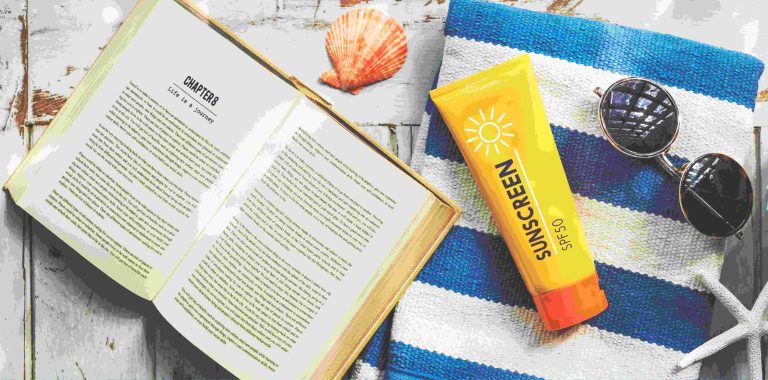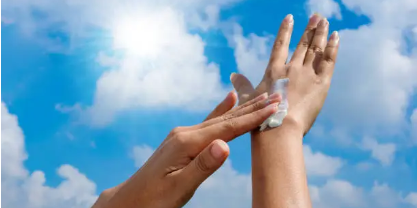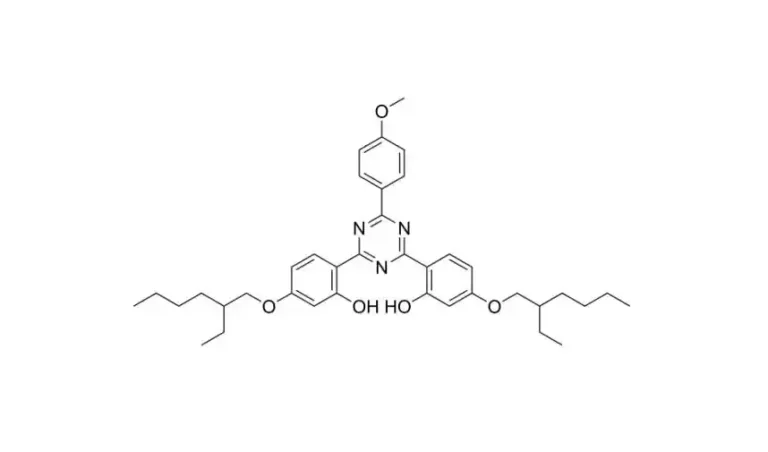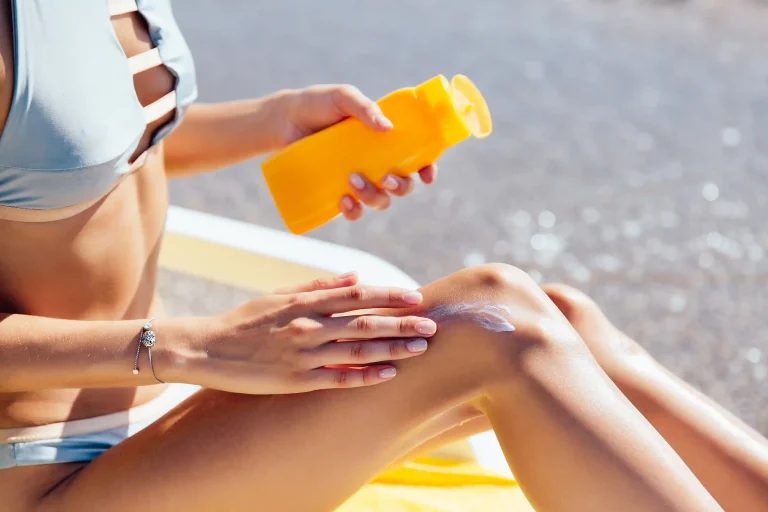Creating sunscreens is a blend of skill and science. Every ingredient matters for strong UV protection. Formulators face a big choice: which UV filter works best?

Bisoctrizole and octinoxate are two popular chemical filters. But which one shines in photostability in sunscreens, broad protection, and ease of use? This article explores the bisoctrizole vs. octinoxate debate. It gives formulators clear insights to make sunscreens that meet modern needs.
What Is Bisoctrizole? A Top Choice for Sun Protection
Bisoctrizole, also called Tinosorb M or methylene bis-benzotriazolyl tetramethylbutylphenol, is a unique UV filter. It mixes traits of organic and inorganic sunscreen agents.
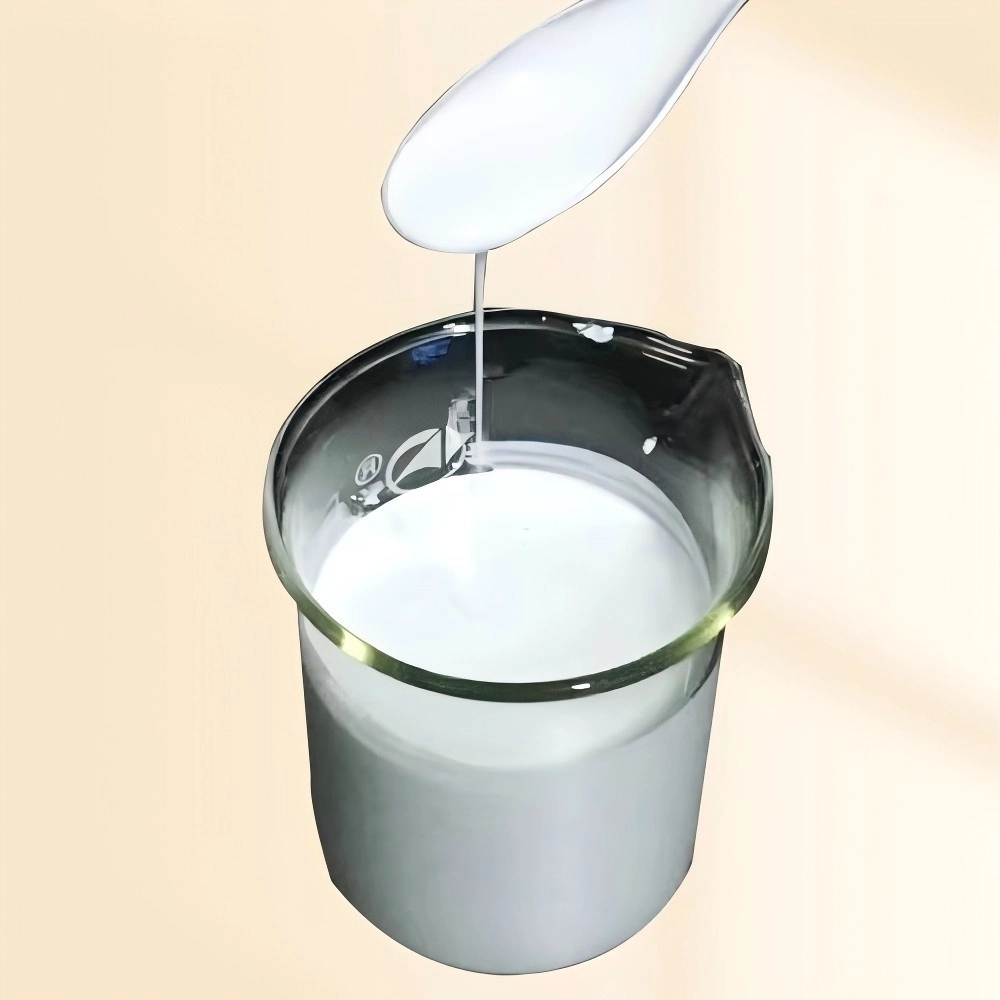
Unlike typical chemical filters, bisoctrizole works in three ways. It absorbs, reflects, and scatters UVA (320–400 nm) and UVB (290–320 nm) rays. This wide coverage, peaking at 305 nm and 360 nm, makes it great for full sun protection.
Bisoctrizole stands out for its photostability in sunscreens. Many UV filters weaken under sunlight. Bisoctrizole stays strong, giving long-lasting protection. Its tiny particles, mixed in the water part of formulas, help stabilize other filters like octinoxate. It also has low skin penetration and irritation risks. Approved in the EU and other regions, bisoctrizole is safe and works well for sensitive skin. This makes it a go-to for new sunscreen products.
Exploring Octinoxate: A Common UV Filter
Octinoxate, or ethylhexyl methoxycinnamate, is a widely used UVB filter. It blocks UVB rays well, peaking at 310 nm. It’s a common choice in many sunscreens. But octinoxate has flaws. It offers little UVA protection. Its photostability is also a problem. Sunlight can break it down, lowering its effectiveness. This may create harmful particles that affect skin or the environment.
Octinoxate dissolves easily in the oily part of formulas. This leads to more skin absorption. Some studies suggest it may act like a hormone or harm marine life. These issues make octinoxate less appealing. Formulators want safer, more stable, and eco-friendly options to meet today’s demands.
Bisoctrizole vs. Octinoxate: A Side-by-Side Look
To help formulators decide, here’s a comparison of bisoctrizole vs. octinoxate on key points:
| Feature | Bisoctrizole | Octinoxate |
| UV Protection | Covers UVA & UVB (280–400 nm) | Mostly UVB (290–320 nm), weak UVA protection |
| Photostability | Very stable, doesn’t break down in sunlight | Breaks down in sunlight, loses strength |
| How It Works | Absorbs, reflects, scatters UV rays | Absorbs UVB rays |
| Skin Absorption | Barely penetrates (0.01–0.06% in tests), low risk | High absorption, possible hormone-like effects |
| Environmental Impact | Safer for oceans and marine life | Harms coral reefs and sea creatures |
| Formula Fit | Boosts other filters like octinoxate, works with most ingredients | Needs stabilizers like octocrylene to stay effective |
| Regulatory Status | Approved in EU, Australia, Asia; not FDA-approved in USA | Approved globally, including by FDA |
Why Bisoctrizole Is the Most Stable UV Filter
Photostability in sunscreens is key for steady protection. Bisoctrizole stays effective even after long sun exposure. Octinoxate, however, can lose up to 36% of its power in just 15 minutes of sunlight without extra help. Bisoctrizole also strengthens other filters, like octinoxate. This improves sunscreen performance. It reduces the need for reapplying often. This makes the product easier to use.
Wide Protection: Bisoctrizole’s Strength
Octinoxate is great for UVB protection. But it lacks strong UVA coverage. This leaves skin open to aging and damage. Bisoctrizole protects against both UVA and UVB rays. It lowers risks of sunburn, early aging, and skin cancer. Formulators targeting long-term skin health prefer bisoctrizole for its full coverage.
Safety and Buyer Appeal
Today’s buyers want sunscreens that are safe for skin and the planet. Bisoctrizole has low skin penetration (0.14% in tests). It shows no hormone-like effects. This makes it good for sensitive skin and eco-friendly products. Octinoxate, however, may cause irritation. It’s also linked to environmental harm, like coral reef damage. This has led to bans in places like Hawaii. Formulators are now looking for options like bisoctrizole.
Why Photostability Is Crucial for Sunscreens
Photostability keeps sunscreens working well. A filter that breaks down in sunlight can’t protect skin properly. Bisoctrizole is the most stable UV filter. It resists sunlight damage. This ensures SPF and UVA protection stay strong during sun exposure. Here’s why this matters:
- Longer Protection: Users get steady coverage without reapplying often.
- Easier Formulas: Bisoctrizole’s stability cuts the need for extra stabilizers. This simplifies formulas and saves money.
- Buyer Trust: Stable sunscreens build brand trust. Users face fewer sunburns or skin issues.

Octinoxate’s breakdown can lower SPF ratings. It may increase skin sensitivity. It also complicates formulas, as it needs stabilizers like octocrylene to work well.
BFP: A Reliable Source for Sunscreen Ingredients
Shanghai BFP New Material Co., Ltd. is a top provider of sunscreen ingredients. They offer bisoctrizole (BFP-SP M), titanium dioxide, and zinc oxide. BFP focuses on safety, quality, and eco-friendly solutions. They follow Good Manufacturing Practices (GMP) for consistent products. Their UV filters, like bisoctrizole, meet formulators’ needs globally. Learn more at their website.
Solving Formula Challenges with Bisoctrizole
Formulators face hurdles in picking UV filters. They must balance effectiveness, safety, and product feel. Bisoctrizole tackles these issues well:
- Smooth Feel: Its tiny particles blend easily. They reduce the white cast seen in mineral filters like zinc oxide.
- Works Well with Others: Bisoctrizole pairs nicely with other filters. This makes formulas more flexible.
- Meets Rules: Approved in strict regions like the EU, bisoctrizole fits global trends for safer sunscreens.
Octinoxate’s Oily nature and environmental issues make it harder to use. This is especially true for brands targeting green markets or sensitive skin users.
FAQs About Bisoctrizole vs. Octinoxate
- Why is bisoctrizole more stable than octinoxate?
Bisoctrizole’s special design absorbs, reflects, and scatters UV rays. It doesn’t break down in sunlight. This makes it the most stable UV filter. Octinoxate weakens in sunlight. It needs stabilizers to keep working. - Can bisoctrizole replace octinoxate in sunscreens?
Yes. Bisoctrizole offers wide protection and great stability. It can replace octinoxate in many formulas. It also boosts other filters’ performance. - Is bisoctrizole safe for sensitive skin?
Bisoctrizole barely enters the skin. It has no hormone-like effects. This makes it good for sensitive skin. Octinoxate may irritate some users. It also has possible hormone concerns. - Why does photostability matter in sunscreens?
Photostability in sunscreenskeeps filters working during sun exposure. It reduces risks of sunburn, aging, and skin cancer. A stable filter like bisoctrizole ensures steady protection.
Boost Your Sunscreen Formulas Now
Formulators want sunscreens that are safe, effective, and eco-friendly. In the bisoctrizole vs. octinoxate debate, bisoctrizole wins. Its great stability, wide protection, and flexibility make it the most stable UV filter for modern sunscreens. Check out bisoctrizole’s benefits at Shanghai BFP’s product page. Contact their team for samples or support. Lead the sunscreen market with ingredients that deliver strong results and earn buyer trust.

